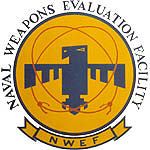24 June 2006, 00:38
Mark TaylorBarrel installation
Never have seen this discussed although it probably has been; Do those of you who do barrel work use an antiseize on the threads? Just wondering, going into an advanced project for me and want to do it right. Thanks
quote:
Originally posted by Mark Taylor:
Never have seen this discussed although it probably has been; Do those of you who do barrel work use an antiseize on the threads? Just wondering, going into an advanced project for me and want to do it right. Thanks
I had a most unfortunate encounter several years ago while pulling a Stainless Stalker apart and since then, I use anti-seize on Stainless, and, AR-15's.
24 June 2006, 03:02
Jim WhiteI always use a little bit of anti-seize.
As Malm pointed out it is mandatory on stainless.
"An ounce of prevention is worth a pound of cure" Jim
24 June 2006, 16:43
D HumbargerWhen there is stainless on stainless I use anti-sieze. Stainless on stainless WILL gaul.
24 June 2006, 17:26
Rusty MarlinAs a suggestion use the nickle based never-seize on stainless to stainless installations.
I did quite an expirement on this some years back and in 410 to 420 SST assemblies the nickled based works better than the copper based, ie you can go to a higher torque level and still get the parts unassembled as needed. The threads will also have a greater tendancy to flex and grip ( as designed) versus gaul and bind.
24 June 2006, 21:01
Mark TaylorMany thanks for the replys.
25 June 2006, 00:06
CraftsmanI use nickel based anti-sieze on all barrel threads, stainless steel and chrome moly.
Most well known accuracy smiths for AR-15 use blue loctite for barrel assembly but I can't bring myself to do that when you have aluminum to aluminum threads, I use anti-sieze on them too. Rifles assembled that way still exhibit 1/2 MOA, and I can disassemble them with no damage to the threads.

